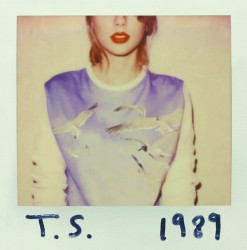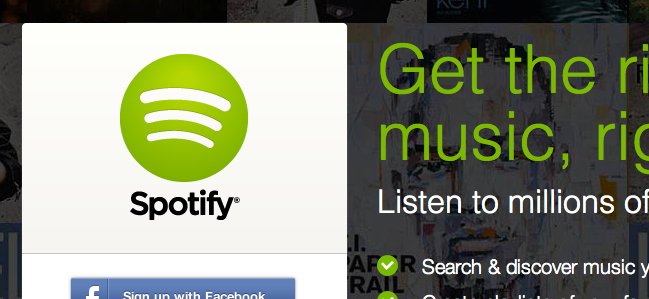Breaking Down the Swift vs. Spotify Battle
 A war has broken out in the music industry. Not since the days of Napster and possibly the start of iTunes has the music community been so divided about what their future should look like.
A war has broken out in the music industry. Not since the days of Napster and possibly the start of iTunes has the music community been so divided about what their future should look like.
If the coverage is to be believed, on one side of the divide is Taylor Swift, the ultra-popular musician who recently managed to sell over 1.25 million albums in a week, the first time that has happened in 12 years.
On the other is Spotify, an immensely popular music streaming service that recently announced it has some 12.5 million paying subscribers, up from 10 million earlier this year.
At the center of the conflict is Swift’s decision to pull her content off of Spotify just as her latest album, 1989, was beginning to take off.
The rift was immediate an immense with artists, executives and music fans all taking sides.
So this begs the question: What is the issue and who is on the right side?
The answer, of course, is complicated but we’re going to take a look at the arguments and understand both what is at stake for the music industry.
Spotting the Divide
 The divide, like most things in business, is over money.
The divide, like most things in business, is over money.
According to Spotify’s artist page, they distribute about 70% of their revenues as royalties to rightsholders, including songwriters, musicians and their representatives. According to their latest blog post, that has come to over $2 billion paid to rightsholders.
But while that sounds like a great deal of money, for most artists it hasn’t worked out very well. As one artist and label owner noted in October, Spotify gave them barely one tenth of a cent from a single stream, of which only a fraction goes to the artist.
For example, a song streamed 100,000 times at that rate would generate around $130, less than the revenue from 17 self-pressed CDs.
Many believe this is because Spotify allows their service to be accessed for free (with ads), resulting in lower royalties per stream. Free users make up an estimated 37.5 million users of the service, more than 3 times the number of paid customers.
Swift felt that it was in her best interest to remove her albums from Spotify (at least for now). The loss in streaming revenue, most likely, will be made up by gains in album sales.
But Spotify calls this view short sighted, they claim that streaming is the future of the music and that many of the people who want to access 1989 online but can’t will simply turn to piracy.
In their view, even the tiny per stream royalty rate is better than the nothing that piracy brings in. However, Swift and those who are on her side believe that, by lowering the price to chase after pirates, they are losing money from loyal, paying fans who are willing and able to pay more.
However, there are really no right answers here and the reason is because, with an industry as varied as the music industry, there is no one-size-fits-all solution.
<
h4>Swift Narratives<?h4>
With this story, it’s easy to cast villains. On one side you have Spotify, the streaming service that pays its artists fractions of a penny per stream while their executives get rich. On the other side you have Taylor Swift, who is refusing $6 million from Spotify to make more money elsewhere at the expense of her fans.
But it’s also easy to create hero narratives as well. Spotify just as easily could be the piracy-killing service that is providing one of the few growth points for the recorded music business while Taylor Swift could just as easily be the empowered superstar standing up for smaller artists that lack the power or courage to make a similar stand.
None of these narratives are completely true and none are completely false. The problem is that much of how you feel about them depends on where you stand.
For example, even Spotify’s critics admit that it might make sense for new artists or younger artists in need of exposure. But, as music lawyer Chris Castle said, “Spotify needs hits and hits don’t need Spotify.”
And that is where Spotify runs into problems. It’s royalty rates are simply not competitive against other sources, even other streaming services, when looked at on a per-stream basis. However, if more artists make like Taylor Swift and pull their music, even the free version of Spotify will lose its value and that will drive customers away.
Without the Taylor Swifts of the world, Spotify likely won’t be able to sustain itself for long. But, if it doesn’t make much financial sense for the hitmakers to stay on Spotify, they will start pulling out with increasing numbers.
The business of Spotify may just not add up, especially for those at the top of the charts.
Bottom Line
In the end, I don’t fault either Taylor Swift for pulling her music out or other artists, those who do have a choice, for leaving theirs in. Right now, all artists, especially musicians, needs to find their path and make the decisions about what is right for them.
At this point, Spotify is not a universal right or wrong answer.
However, for better or worse, streaming is the future of music, and all media for that matter. In Europe, Spotify royalties overtook iTunes earnings earlier this month the combined trend of rising streaming with shrinking sales is likely to continue.
But this doesn’t mean that Spotify is the future. Apple is looking to revamp Beats Music with a lower price point and no free version and other companies are hoping to crack the code on balancing competing with piracy and competing with other sources of revenue.
The problem is that there comes a point where lowering the price of a work to chase pirates doesn’t make sense. While Spotify’s stated goal of ending piracy and returning the revenue to artists is a noble one, when it comes at the price of other, greater revenue streams, it isn’t worth it.
Besides, even with a price point of $0, some piracy is still inevitable, as Spotify has shown.
But where exactly the point of diminishing returns is difficult to say and it’s different for every artist and for every song. So while Spotify, and others, need to work to find their balance, artists have to find theirs and, at times, that will mean walking away from what some will see as a great deal.
Want to Reuse or Republish this Content?
If you want to feature this article in your site, classroom or elsewhere, just let us know! We usually grant permission within 24 hours.
